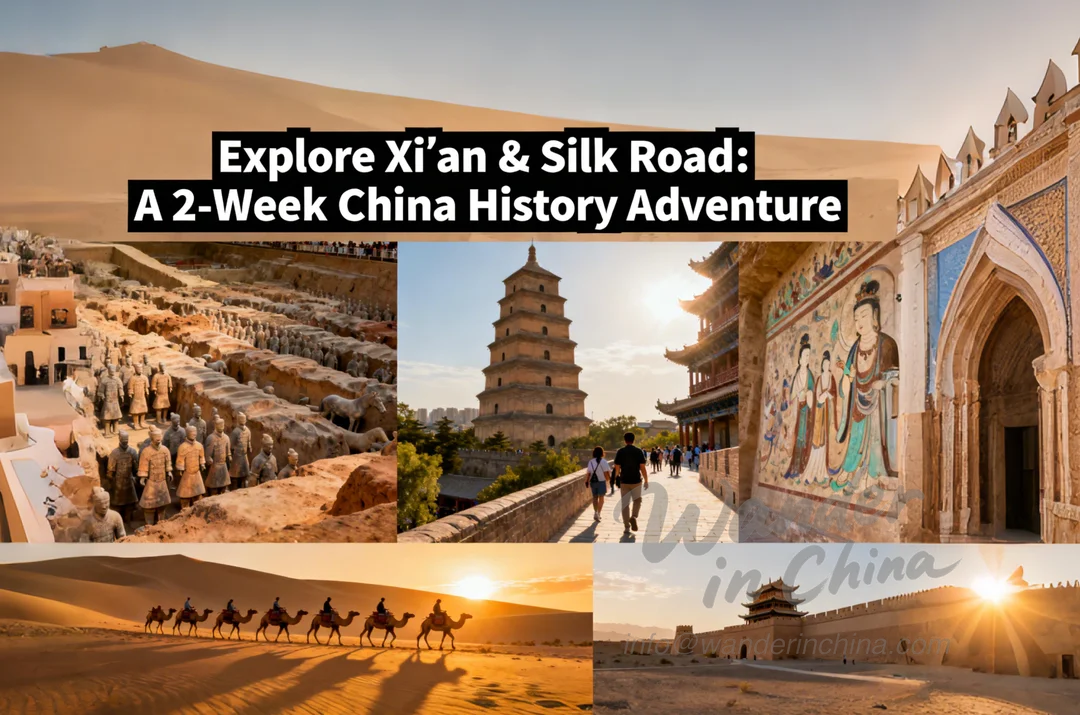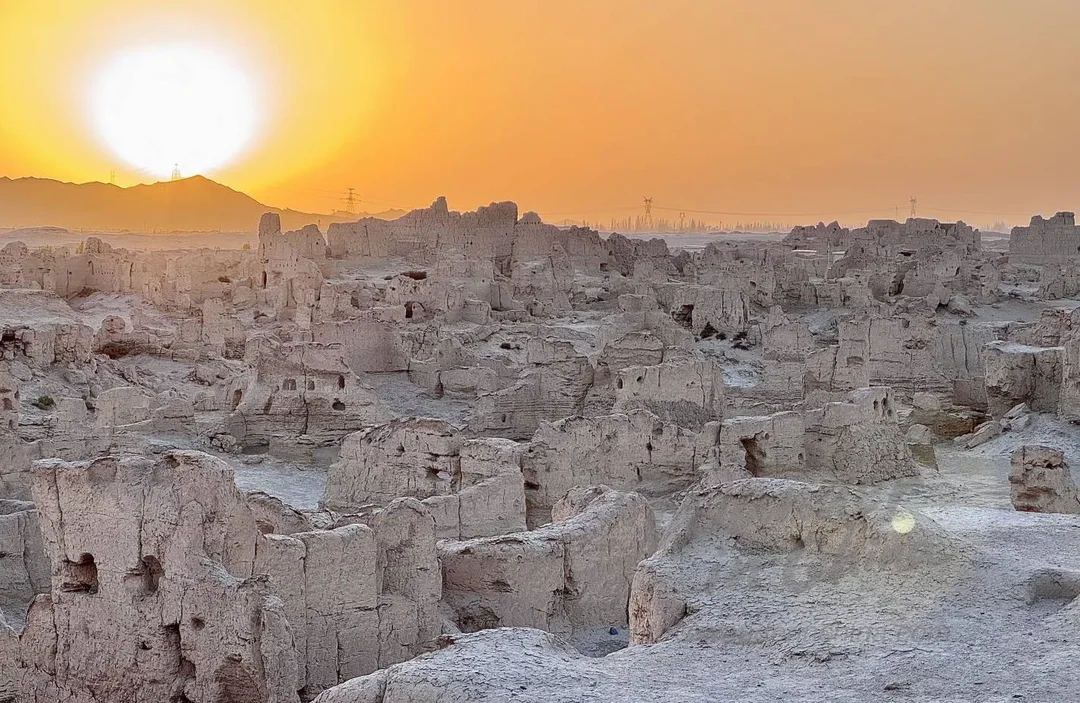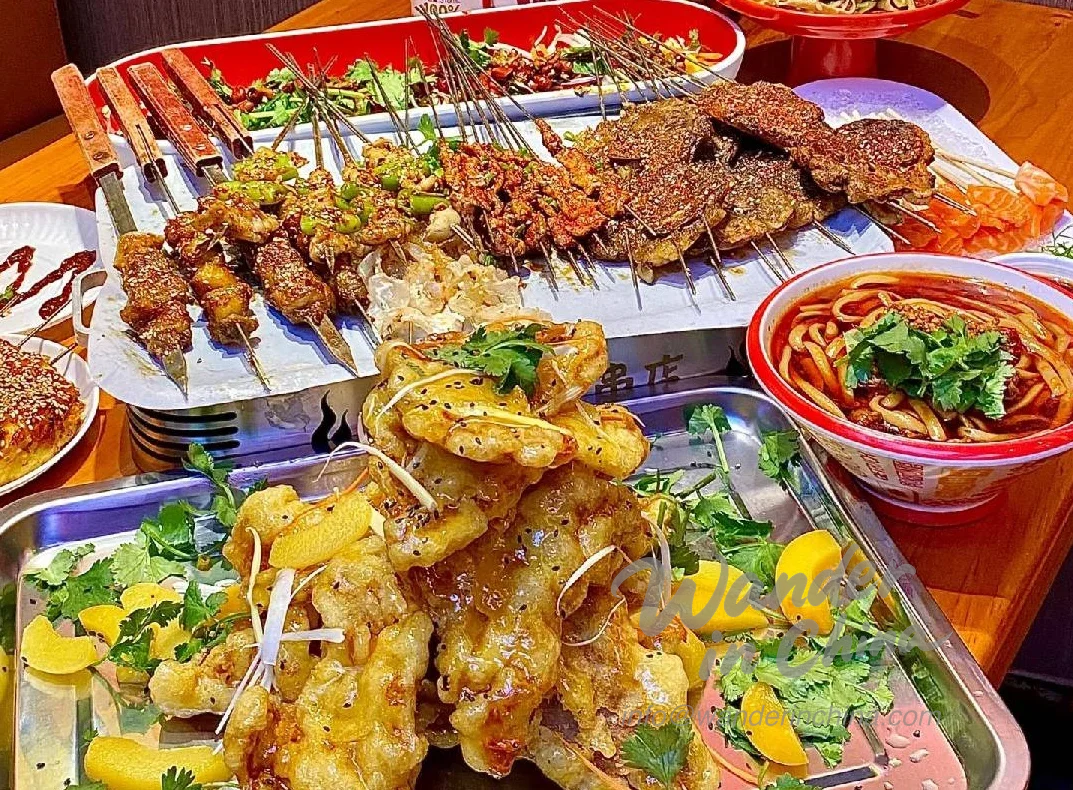Explore Xi'an & Silk Road: 2-Week China History Adventure

Embark on an unforgettable 2 week China itinerary Xi’an Silk Road adventure, tracing the footsteps of ancient traders and explorers. This 14 day China itinerary Xi’an Silk Road focuses on history, culture, and the stunning landscapes of Western China, offering a unique perspective beyond the bustling eastern cities.
This China Silk Road itinerary 2 weeks takes you from the ancient capital of Xi’an, eastward along the legendary Silk Road, to the desert oases of Dunhuang and Turpan, before returning to Xi’an. Get ready for an immersive experience into the heart of Chinese history and the Silk Road’s captivating legacy. For a complete overview, see our main guide to China Travel Itinerary: The Ultimate 2-Week Guide for First-Timers.
2 week China itinerary: Xi’an Silk Road adventure
* Day 1-3: Xi’an - Ancient Capital and Silk Road Start
Xi’an, the eastern starting point of the Silk Road, is a city steeped in history and flavor. Spend three days exploring its iconic landmarks, tasting local specialties, and timing visits for the best light and weather. Spring and autumn are ideal (mild temperatures, clear skies); summers can be hot with strong sun, while winters are cold but crowd‑free.
- Terracotta Army: Witness the awe-inspiring Terracotta Army, a vast collection of life-sized clay soldiers guarding the tomb of China’s first emperor, Qin Shi Huang. Allow ample time to explore the different pits and learn about the history behind this incredible archaeological site. Pit 1 showcases the iconic formation and scale; Pits 2 and 3 reveal specialized units and command structures. Consider a guided visit for deeper context and visit the onsite museum afterward. In summer, go early to avoid heat and crowds; in winter, dress warmly for breezy outdoor walkways.

- City Wall: Rent a bicycle and cycle along the ancient City Wall, offering panoramic views of Xi’an. This is a great way to appreciate the city’s layout and historical significance. Aim for sunrise or sunset for soft light over the rooftops and cooler temperatures. In summer, bring water and sun protection; in winter, the top of the wall can be windy—gloves and a warm layer help.
- Muslim Quarter: Immerse yourself in the vibrant atmosphere of the Muslim Quarter, sampling local delicacies like rou jia mo (Chinese hamburger) and paomo (mutton soup). Add biangbiang noodles, lamb skewers, persimmon cakes, and fresh pomegranate juice to your list. Evenings are lively and crowded—great for street‑food grazing. If it’s hot, take breaks indoors; if it’s chilly, steaming bowls of noodles or paomo are perfect.
- Great Mosque: Explore the Great Mosque of Xi’an, a unique blend of Chinese and Islamic architecture, reflecting the city’s diverse cultural influences. Quiet courtyards, wooden pavilions, and carved details make this a peaceful stop. Dress respectfully and avoid prayer times. Photography is best in soft light; shade offers relief in summer.
* Day 4-6: Dunhuang - Desert Oasis and Mogao Caves
Take a high-speed train to Dunhuang, a desert oasis city famed for its Silk Road history and stunning natural landscapes. Expect dramatic desert scenery, big skies, and day‑night temperature swings. Pack sun protection for daytime and a light jacket for evenings.
- Mogao Caves: Explore the Mogao Caves, a UNESCO World Heritage site containing thousands of Buddhist cave temples adorned with exquisite murals and sculptures. Book your tickets in advance, as entry is limited. Guided tours highlight masterpieces from different dynasties, with vivid pigments and delicate guardian figures. Photography is typically restricted inside—use the museum to study details up close. Visit in the morning for cooler temperatures.

- Singing Sand Dunes and Crescent Lake: Experience the magic of the Singing Sand Dunes and Crescent Lake. Ride a camel across the dunes, sandboard down the slopes, and admire the stunning oasis landscape. Sunset is a particularly beautiful time to visit, with golden light on the dunes and cooler air. Wear breathable clothing, protect your phone/camera from sand, and bring water—desert winds can be strong.
- Yumen Pass and Han Great Wall: Journey to Yumen Pass (Jade Gate) and the Han Great Wall, remnants of the ancient Silk Road frontier. These historical sites offer a glimpse into the past and the challenges faced by travelers on the Silk Road. Expect stark Gobi desert views, open horizons, and minimal shade—hat and sunscreen are essential. The sense of remoteness adds to the atmosphere; plan extra time for transport and quick weather shifts.
* Day 7-9: Turpan - Ancient Oasis City
Continue your Silk Road adventure to Turpan, an ancient oasis city known for its unique culture, historical sites, and grape production. Summers are very hot—start early, rest midday, and enjoy cooler evenings among grape trellises.
- Jiaohe Ancient City: Explore the ruins of Jiaohe Ancient City, a remarkably well-preserved city carved into a cliff, showcasing the ingenuity of ancient urban planning. The sun‑baked earth architecture and eroded alleys are striking in morning or late‑afternoon light. Footpaths can be uneven—wear sturdy shoes and carry water.

- Karez Water System: Discover the Karez Water System, an ancient underground irrigation system that has sustained life in the Turpan region for centuries. Exhibits explain how deep channels bring snowmelt from distant mountains—cooler indoor displays offer a welcome break on hot days.
- Emin Minaret: Visit the Emin Minaret, a towering Islamic minaret showcasing traditional Uyghur architecture. Admire brick patterns and local craftsmanship; the surrounding complex is photogenic in warm evening light.
- Grape Valley: Indulge in the sweet delights of Grape Valley, sampling different varieties of locally grown grapes and learning about the grape cultivation process. Harvest season (roughly July–September) brings fresh tastings and sun‑dried raisins. Try local dishes like polo (rice pilaf) and kebabs; shaded vineyards are perfect on hot afternoons.
* Day 10-11: Train Journey back to Xi’an
Enjoy a relaxing train journey back to Xi’an, reflecting on your Silk Road adventures. Sleeper compartments make longer routes comfortable; daytime rides offer changing desert‑to‑city scenery. Pack snacks and tea for a classic China travel vibe.
* Day 12-14: Departure from Xi’an or further Exploration
Depending on your travel plans, you can depart from Xi’an or extend your stay to explore more of the city and its surrounding areas. Consider visiting the Shaanxi History Museum for a deeper understanding of the region’s rich history, and add Huashan for mountain scenery or Hanyangling for Han‑era burial art. For food, revisit the Muslim Quarter or try biangbiang noodles and dumplings near the Small Wild Goose Pagoda. In spring/autumn, enjoy comfortable walking weather; in summer, plan indoor museum time midday; in winter, bundle up and savor hot soups. This 2 week China itinerary Xi’an Silk Road offers a unique glimpse into the heart of Chinese history and the Silk Road’s captivating legacy.





